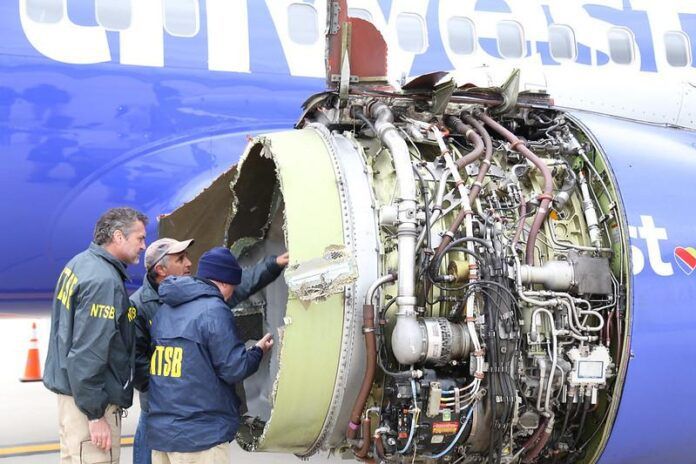The FAA has proposed an AD that will require all 6,000 Boeing 737NG aircraft in service in the U.S. to be retrofitted with beefed-up engine nacelles. The AD was issued after a couple of fan blade failure incidents on Southwest aircraft in which pieces of the nacelle pierced the fuselage of the aircraft. In a 2018 mishap, a woman was killed in the resulting explosive decompression, becoming the only airline fatality for that year. The AD applies to all aircraft in the 600 to 900 series. There are also thousands of 737NGs in service in the rest of the world, and aviation authorities in other countries will likely also require the modifications.
The required changes will apparently vary depending on the aircraft model but include new stronger inlet spacers, a fan cowl support beam and a redesigned exhaust nozzle. The retrofits are expected to cost $7,650 per engine and the work will take about 90 hours. The comment period on the AD ends on Jan. 26 and all aircraft have to be in compliance by July 31, 2028.



































“cost $7,650 per engine”. Lucky it’s a Boeing and not Textron. Textron wants $7500 for a simple Cessna 182 wing strut doubler.
$85/hour… my plumber gets more than that. And that’s just the labor. BAD estimate!
BAD interpretation, Jake. You’re confusing parts cost with labor costs.
VALID interpretation, jfhelan.
If I asked my plumber how much a job would cost, I would expect him to either give me the total cost, or to specify that he was just quoting the parts cost.
Need to account for
Parts
Labor
Inspection
Lost Revenues
Flight to shop
Documentation
That’s a fairly simple part. If your A&P had the equipment and agreed to make one for you would it be legal to use ?
The price tag seems indeed low but airlines will dread the loss through downtime more than the average Skylane owner.
Move the decimal point at least two clicks to the right.
Imagine if the retrofit turns out to be the original design that got pushed aside.
So that’s a 180 hour down time per aircraft under GAO expectations.
So make it more like 250 hours for the ” learning curve ” and figure $ 25k per aircraft.
Not that it really matters but, the man hours will be double but, not downtime. They’ll put two crews on the aircraft to apply the mod while it’s down for other maintenance.
Also, they aren’t paying retail labor costs so the $85 / hour isn’t really relative to a plumber’s rate either.
At that price point I guess they are modifying the existing cowl to conform to new spec. I’m sure you can’t build a new cowl from scratch for that price.
On the other hand, the prospect of being killed or injured by a piece of shrapnel, or worse having the plane suffer serious or catastrophic loss, makes this relatively inexpensive fix seem really worthwhile.
$7,650 an engine, that sounds very reasonable. A new cylinder for my E-225-8 is $2,400 alone.
I think that’s only the parts cost.
Yeah, I read that as a parts cost. Add labor, aircraft downtime and all that and it’s certain to be multiples of $7,650.
Why not issue an AD for the engine fan blades? No need to beef up the nacelle if the engine stays together. It’s like putting a bandaid on a broken arm.
My compliments to Rich K. Russ Niles usually is very accurate in his facts, but as a retired airline mechanic, I spent more money than that changing a wheel/brake combo at the gate during a “turn”. I suspect the actual final dollars will be significantly more.
But Rich K. – at any cost – got it right! Next time you are riding along in your stall with all the other pax, just think about that poor women being sucked through that window by the uncontained failure (fan blades will fail under the “right” circumstances and there just ain’t nothing you or I can do about that!). If this AD – like so many other AD’s that survived ravaging criticism from the “peanut gallery” – saves a single life, it is worth every penny.
So the parts are $7650. The labor is 90hrs * $100/hr= $9000. For a total of $16650 per engine or $33300 per aircraft.
The article says 6000 aircraft in the US and thousands more elsewhere, let’s guess 6000 more. So that’s 12000 aircraft.
The total cost is about $400,000,000.
“If it saves a single life, it is worth every penny” Anybody whose life is worth $400mil is flying in a Gulfstream, not in a 737. My wife will gladly have me get sucked out of an airplane for $400 mil.